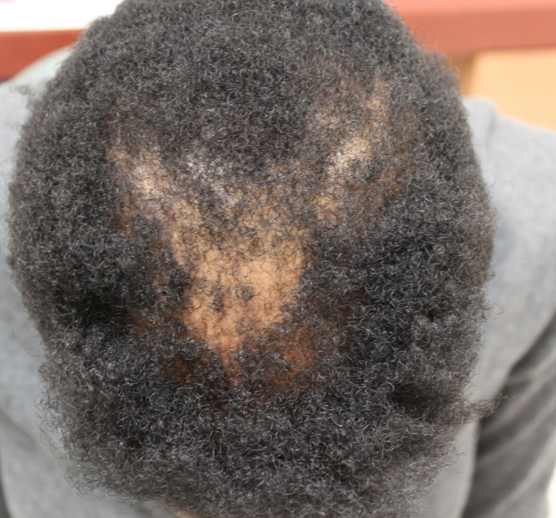Trichoscopy of Central Centrifugal Cicatricial Alopecia
CCCA: Trichoscopy
Central centrifugal cicatricial alopecia (CCCA) is a scarring alopecia that commonly affects women with afrotextured hair. It has a genetic basis in some women. The condition starts with central hair loss in most affected women and this is followed by expansion of the hair loss outwards. There may be symptoms such as itching, or pins and needles, but many women are asymptomatic.
In an article earlier this year, I discussed some very interesting studies which showed a five fold increased risk of uterine fibroids among women diagnosed with CCCA.
Dermatoscopic Features of CCCA
It is critically important to identify CCCA in the early stages in order to try to stop hair loss. Today I'd like to focus on the up close features of CCCA using a handheld dermatoscope. We refer to this as trichoscopy.
The trichoscopic features of CCCA are few. Miteva and Tosti in 2014 published the first real compressive overview of the trichoscopic features of CCCA. They retrospectively images obtained from 51 women with histologically proven CCCA and compared to controls (which included 30 dermatoscopic images from histologically proven cases of scarring traction alopecia and discoid lupus erythematous).
The Peripilar White Gray Halo
The so called "peripilar white gray halo" was found in 94% of patients and was highly specific and sensitive for CCCA. This halo was seen around the emergence of hair follicles.
The halo was shown to correspond on pathology to the lamellar fibrosis surrounding the hair follicle outer root sheath.
Reference
Miteva and Tosti. Dermatoscopic features of central centrifugal cicatricial alopecia. J Am Acad Dermatol. 2014.
This article was written by Dr. Jeff Donovan, a Canadian and US board certified dermatologist specializing exclusively in hair loss.


